Amateur astronomer Paul Signorelli asks: Can a $400 observatory built from old shipping crates and a dome riding on golf balls withstand the harsh environment of the Rocky Mountains for almost four decades?
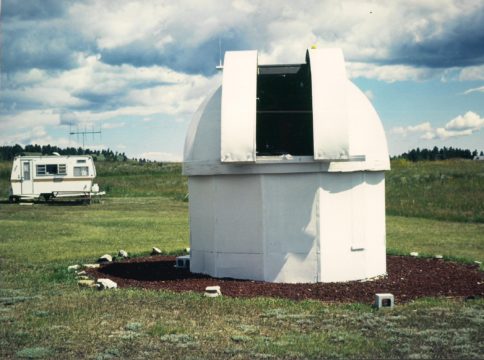
Paul Signorelli
Indeed it can, as shown by the stalwart nature of the Las Brisas Observatory (LBO), Colorado. Built in 1982 as a field station with very limited facilities (there's no one in residence there), LBO has been in operation for almost four decades. The observatory is located on the old Spanish "Las Brisas Ranch," ten miles west of Pikes Peak, Colorado, at an elevation of 8,550 feet. "Las Brisas" translates to "The Breezes" in English, and this old ranch has really strong ones!

The modest LBO structure, built by Alan Raycraft out of old plywood shipping boxes, is 12 feet in diameter and 12 feet tall. The dome is made of thin Masonite that rides on one hundred (currently) 37-year-old golf balls. This unique design was adapted from J. Hedley Robinson's chapter on observatory domes in Patrick Moore’s Astronomical Telescopes and Observatories for Amateurs, published in 1973.
Inside the observatory stands a 14-inch Celestron Schmidt-Cassegrain telescope and an 8-inch Schmidt camera mounted on a large concrete pier. The walls, by contrast, have no footings; they're sitting at grade and are actually frozen to the ground during winter. Lesson learned: An observatory built without a foundation is soon to be ruined.
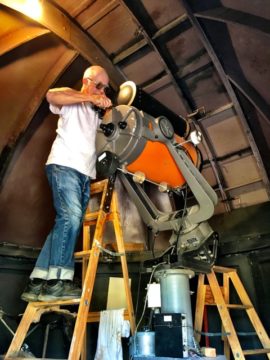
Steve Glachutt
The Rocky Mountain temperature cycling has exploded a few golf balls over the years, delaminated some of the plywood, and cracked some of the glued braces. The lowest winter temperature at the site is usually –20°F, but in 2015, a low temperature of –51°F was recorded in an adjacent valley. Even some of the electronics have been damaged by the –20°F to +80°F degree cycling. After 40 years (over 14,000 cycles) that's to be expected, and overall, LBO's condition remains good. It's been swamped in a flood, evacuated for a forest fire, and survived heavy winds that destroyed a nearby modular home. Hail has damaged the Masonite dome, but repairs have kept it water tight. Still standing!
The observatory is unheated, but the cold temperatures are compensated for by wearing World War II-era F1 pilots' suits, electrically heated. If you're not familiar with the suits, watch the the 1944 documentary The Memphis Belle: A Story of a Flying Fortress about the B-17 bomber. The suits can also be seen at this WWII Uniforms and Flight Gear website. Once when I was troubleshooting a wiring problem in a suit, I asked my wife to put it on so I could find where the wire had broken. That was the last time she ever wore it — the broken wire gets hot when it fails!
The LBO's "Administration Building" (a 21-foot trailer) does have heat and a humidifier. The subzero temperatures and low humidity at this altitude are hard on your lungs. There's no need for a refrigerator, of course; instead we have a "hot box" to keep things from freezing.
The Celestron 14-inch has a Lumicon Giant Easy Guider for F6 operation. The LBO's 8-inch Schmidt camera has been make obsolete by Celestron's Fastar system and the Rowe-Ackermann Schmidt Astrograph, but it's still being used. The Schmidt camera, which produces mirror-reversed images, brings all the light into focus on a curved surface, so it can’t be imaged on a flat CCD detector. Our primary astrophotography work still uses photograph film. Kodak has started to produce Ektachrome E100 film again and it's pretty good. The exposed film is sent off to The Darkroom Photo Lab, where it's developed and uploaded to the web. I can get several 85 MB digital pictures from film for $30. This works for me since I don’t have a digital camera.
I used to hypersensitize my film but ran out of Forming Gas (92% nitrogen, 8% hydrogen), so I haven't been able to do that for a long time. When I tried to buy more Forming Gas and mentioned hydrogen, the suppliers look at me suspiciously and declined to supply me any. They probably called Home Land Security after I left!
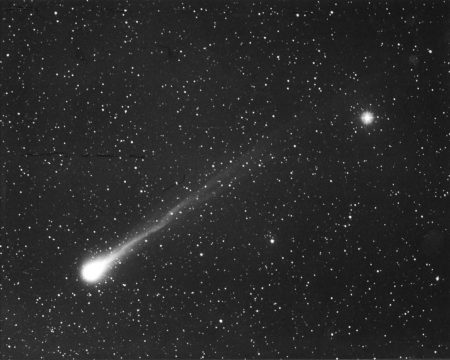
Paul Signorelli
We've seen (and photographed) some stunning sights from LBO over the years. For instance, we've observed all the comet greats in the past 37 years. In 1986, we braved +10°F temperatures to observe Halley’s Comet. Hyakutake (C/1996 B2) put on an epic show in 1996 and Hale-Bopp (C/1995 O1) followed it up in 1997. Comet Machholz (C/2004 Q2) revealed its glorious tail for our color film as it passed near the Pleiades in 2005. Halley’s is about to head back toward Earth now, but LBO and I won’t be here when it next comes closest to Earth!
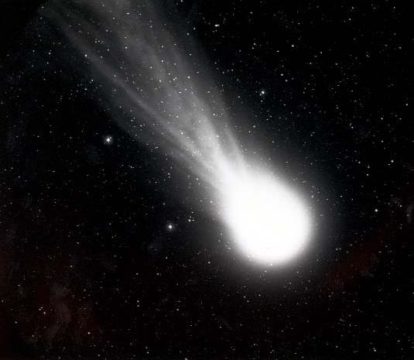
Paul Signorelli
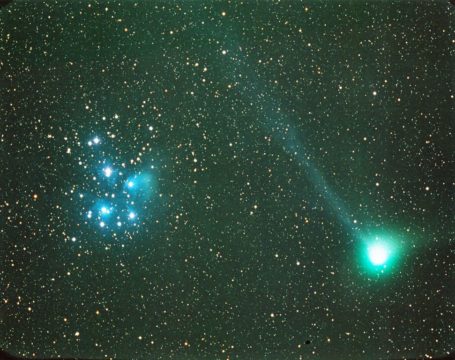
Paul Signorelli
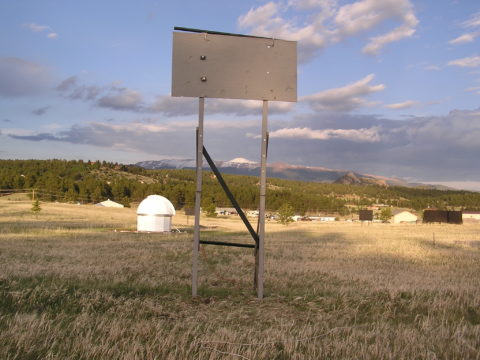
Paul Signorelli
When LBO first went into operation, there was very little light pollution in the area. In 1991, the Cripple Creek, Colorado, gambling operation began and it brought new homes to the area. Neighbors' yard lights were shining right into the telescope optics, so we erected light shields: 4×8-foot plywood sheets placed about 100 feet from the observatory. The 8-foot width of the shield can produce a 12-foot shadow. Several are 15 to 20 feet high, mounted on 4×4’s.
A sky cam over LBO shows stars down to 4th magnitude. You can also take an online video tour of LBO, complete with golf balls (observatory coverage starts at the 5:20 mark). If you want to come to Colorado and watch the stars, be sure and check out the Rocky Mountain Star Stare (June 26–30, 2019).
Carpe Noctem!
 1
1
Comments
Alan
April 21, 2019 at 7:11 pm
I learned some things when I build this. Some were fun, Some were not. The golf balls were fun, especially since I had sprayed them with silicone spray. The dome almost turned too easily. Q. Why do so many people use wheels for a dome to turn on ? Wheels want to go in a straight line. Golf balls don't care. Next: What wasn't fun was trying to use a small ladder to use the Newtonian scope. Just not enough room for it. When Paul bought the property he did the right thing when he put in the C-14. There are some alternate dome designs (for Newtonians) I'd like to show you, but I don't see an image upload option. Suggestions ?
I told a friend: It was actually a poor location because almost all of Rt. 1 (South of Florissant CO) is in a valley so lunar and planetary viewing wasn't very good. I went for a walk UP the road out there when it was almost dusk. When I turned around and went back down into the valley I suddenly noticed that the air got cooler, so the thermal difference made the images rather poor. Some improvement could be seen at about 2 AM but I didn't like setting the clock. and getting out of a nice warm bed. The moral of the story is: Try to avoid valleys. .... Alan
You must be logged in to post a comment.
You must be logged in to post a comment.